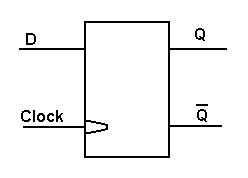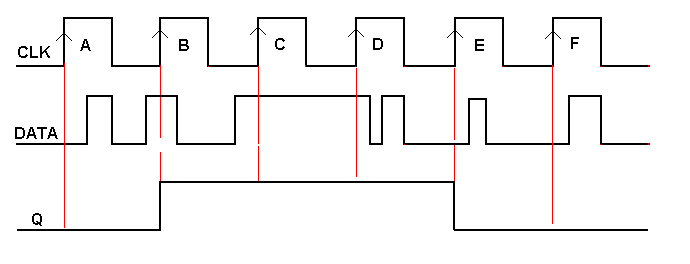

| We looked at
the clocked D type flip-flop previously.
Q follows D while the clock is high. If the data at D changes during the clock pulse, then Q will change. This may be undesirable. With the edge triggered flip-flop, Q will only follow D during the instant of the clock edge. Either clock
pulse edge may be used, positive going (rising) or negative going (falling).
|

| The timing diagram shows
the rising edges of the clock pulses.
At edge A, data is low, and even though there is a positive pulse during the clock period, Q stays low. At edge B, data is high and Q goes goes high. At edge C, data is still high and Q stays high. At edge D, data is still high and Q stays high. During clock pulse D, data goes low for a period, but Q stays high. At edge E, data has gone low and Q goes low. Data goes high for a period during clock pulse E, but Q stays low. At edge F, data is still
low and Q stays low.
Below is a negative edge clocked flip-flop. |